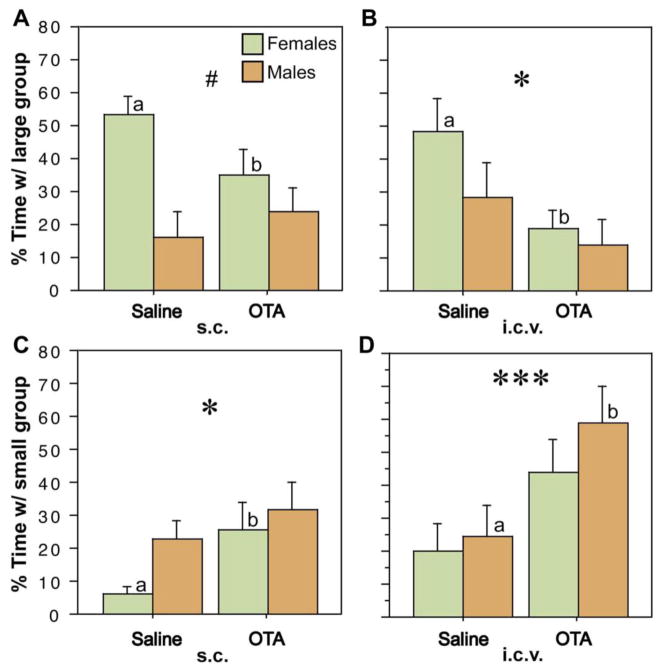Fig. 4.
Antagonism of oxytocic receptors reduces preferences for larger groups in zebra finches. Relative to vehicle treatments, subcutaneous (s.c.) or intracerebroventricular (i.c.v.) administrations of the oxytocin antagonist desGly–NH2, d(CH2)5[Tyr(Me)2, Thr4]OVT (OTA), reduce the amount of time that zebra finches spend in close proximity to the large group (B–C) and increase time in close proximity to the small group (D–E). *P < 0.05, ***P < 0.001, main effect of Treatment; #P < 0.5 Sex*Treatment; n = 12 m, 12 f. Letters above the error bars denote significant within-sex effects. Modified from Goodson et al. (2009d).

